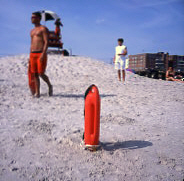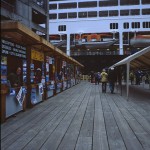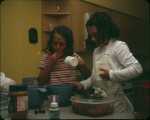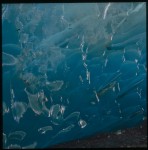 Yes, this is the noon light, not the moon light. Early in January, the sun doesn’t get very high in our sky. It rakes in very low, and there are often shadows mid-day caused by the sun being obscured by some mountains. In earlier folios, you have seen where the ice meets the land. This is where the ice meets the lake.
Yes, this is the noon light, not the moon light. Early in January, the sun doesn’t get very high in our sky. It rakes in very low, and there are often shadows mid-day caused by the sun being obscured by some mountains. In earlier folios, you have seen where the ice meets the land. This is where the ice meets the lake.
Catching the dawn light on the glacier is a tricky business. By definition, it involves starting the mile and quarter trek across the lake (either by skate or by ski) before dawn. It requires a bit of nerve to lace up my skates and set out across the lake in the dark with a pack loaded with camera gear. Once there, in the pre-dawn light, the challenge is to find the image that will be there when the sun arrives.
In this case, I caught the light on the extreme face of the glacier. There is nothing for scale, but the hummock to the right is probably only four feet high. That makes the face about 30 feet high. The lake ice in front of it (as well as where I’m standing) is a mass of re-frozen crumble. At any time, the glacier may slide forward and wrinkled the ice for many yards. The lake is also littered with bergs which have fallen off the face. If that should happen, the resulting waves will leave broken ice for half a mile. I have never been there when it happens, but the evidence that it does happen is recorded in the ice at my feet.
This was shot with my TL120-55 on a tripod in January, 2010.




